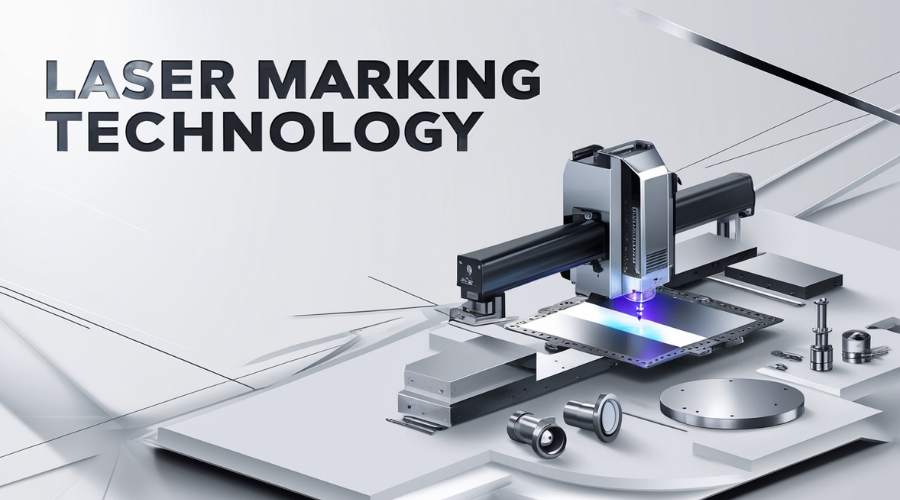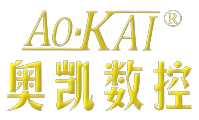.jpg)
Blogs
Laser Marking Technology: How it Works and Its Applications

Have you ever wondered how that sharp, permanent mark gets on your metal, electronic, or medical tools? The solution is an exciting technology known as laser marking. This blog will identify laser marking, explain how it works, and why it has become significant to various industries.
What is Laser Marking, Precisely?
Laser marking achieves permanent marks on materials using light beams. Unlike conventional methods like ink printing or mechanical engraving, it doesn't require inks or physically cut into the material.
Instead, it alters the material's surface through heat from a laser beam with a focus. Imagine it as using a magnifying glass focusing sunlight upon a leaf, only much more precise and under control. Using the laser, the marks do not fade or wear off in any way after some time.
How Does Laser Marking Work?
When narrowed down, laser-marking machine essentially uses light energy to make changes on material surfaces. This is how it is done in a few steps:
Creating the Laser Beam starts with a powerful, focused light beam. The key is producing a precise light beam.
Focusing the Beam: The laser beam goes through special lenses that allow focusing it to an extremely little spot, sometimes smaller than one human hair.
Controlling the Movement: Computers align the direction of the laser beam precisely to whatever area it should reach, regulating its position and intensity as well.
Material Interaction: When the laser touches the material, several things may occur based on its power level and the material.
• The material might melt slightly
• The surface might change color
• A thin layer might vaporize
The material may bubble up or foam up.
Creating the Mark: As the laser scans on the surface, it creates permanent marks that will constitute the required text, logo, barcode, or design.
Types of Laser Marking Methods
Lasers act differently on different materials; hence, several marking methods have been developed.
• Annealing: This approach works amazingly for metals. The laser heats the metal slightly to alter its color without melting it. For instance, upon annealing stainless steel, a golden or black mark is formed depending on the heat temperature. It is similar to how toast turns a color when heated, but much calmer.
• Engraving: Laser engraving removes minute material to create depressions or grooves. The laser melts small surface parts, forming tactile marks. This technique works on various materials and produces durable marks.
• Color Change: Some materials acquire a color change when exposed to lasers. Plastics, for instance, can change color from white to black or dark brown if struck with a laser. This occurs due to chemical modification of the material itself, no inks or additives.
• Foaming: When lasers strike particular plastics, tiny bubbles are produced under the surface that scatter light differently from the surrounding material. This leaves noticeable marks that are in contrast with the background.
• Carbon Migration: This process acts on plastic, glass, and ceramic types of material. The laser beam is sufficient to boil the material to the point where carbon particles come to the surface, leaving dark marks.
Materials that are Laser Markable
One of the wonderful things about laser marking is that this technology can be used on various materials. Here's a quick list:
- • Metals (steel, aluminum, copper), gold, silver.
- • Plastics of many types
- • Glass
- • Ceramic
- • Wood
- • Leather
- • Stone
- • Paper and cardboard
- • Silicon (for computer chips)
Different materials will need different lasers and settings for optimal results.
Common Applications of Laser Marking
Laser marking is the technology that has made its way into almost all industries. Here are some of the examples you can come across in everyday life:
Product Identification
- • Serial numbers on electronics
- • Manufacturing dates on car parts
- • Barcodes and QR codes in packaging
- • Batch numbers on food containers
Personalization
- • Names on jewelry
- • Logos on corporate gifts
- • Individualized text on awards and trophies
- • Personalized engravings on consumer products
Safety and Compliance
- • Wear-proof warning labels.
- • Fixed safety information about medical devices
- • Tracking codes on airplane parts
- • Tamper-proof markings on security devices
Industrial Uses
- • Part identification in manufacturing
- • Cable and wire marking
- • Circuit board labeling
- • Tool identification
Benefits of Laser Marking
Laser marking has become so popular for some good reasons:
• Permanence: Unlike printed labels or stickers, laser marks are part of the material. They won’t come off, vanish, or get damaged under normal wear and tear, cleaning, or chemical exposure.
• Precision: Lasers can produce intricate marks, including tiny writings, that cannot be done by conventional means. Industrial laser markers can engrave lines that measure less than a human hair.
• Speed: Modern laser marking can label products quickly, sometimes in less than a second on one item. This makes it ideal for use in production lines requiring marking thousands of products.
• Contactless Process: Because the laser never contacts the item it is marking, there’s:
- • No wear and tear to the marking tools
- • No force on fragile parts.
- • No risk of contamination (medical devices are valuable).
Environmentally Friendly
Laser marking: Does not use inks, solvents, or chemicals. It Creates minimal waste and uses relatively little energy. Does not use disposable supplies, such as ink cartridges
Versatility: The same laser marking machine can process multiple materials to produce different marks, such as simple texts, complex logos, or barcodes.
The Future of Laser Marking
There are still advancements in laser marking technology. Newer systems are becoming:
- • Smaller and more portable
- • Faster and more efficient
- • Capable of marking tougher materials
- • Smarter with better computer control
- • More affordable for smaller businesses
Some pioneering applications include:
- • Tagging products with invisible codes that can only be made visible under certain light.
- • The development of "smart" marks, which carry digital information.
- • Direct marking of foods with lasers, without the packaging.
- • Designing laser systems that can mark curved or irregular surfaces perfectly.
Conclusion
Laser marking technology has changed how we mark product identity, trace, and personalize products. It ensures quality, safety, and traceability from the phone in your pocket to hospital medical equipment.
The technology is constantly developing, and new applications are appearing regularly. With the advancement in prices and user-friendliness of laser systems, even small businesses and hobbyists can enjoy the value of this flexible marking technique.
